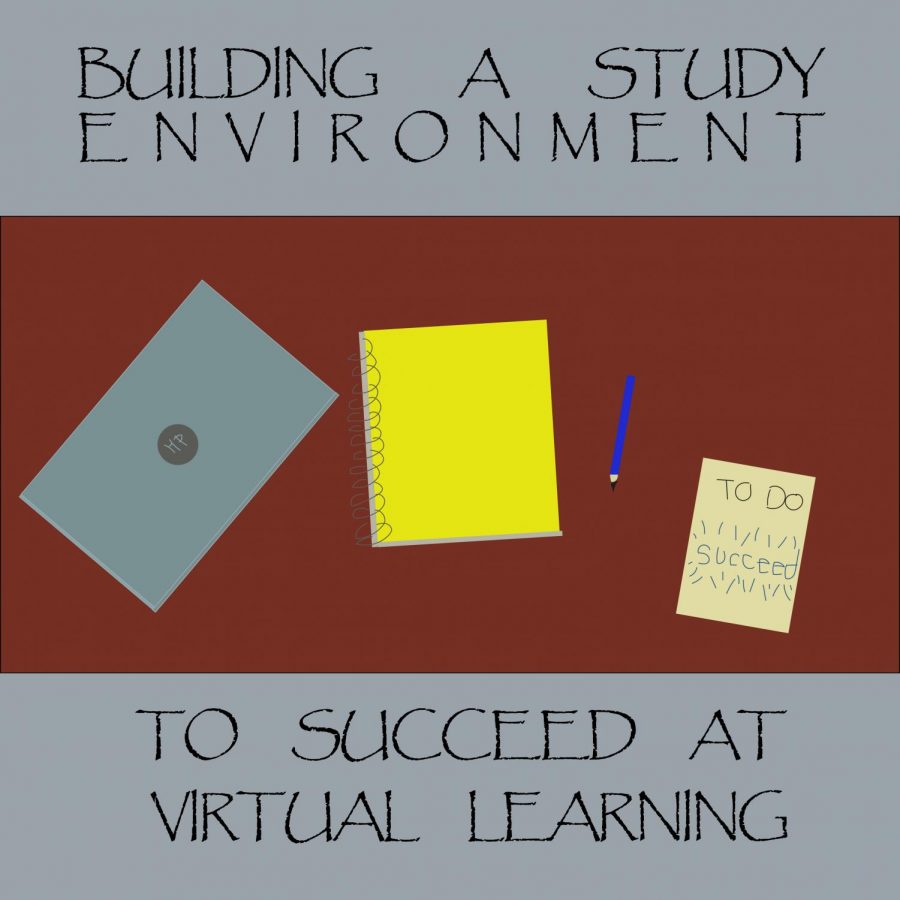Building a study environment for a virtual course
August 31, 2020
With the bulk of classes at CSU Bakersfield being offered online during the fall 2020 semester, it is important that students are prepared to create a healthy learning environment that promotes success. Scholars have spent countless hours researching how a variety of independent variables effect study sessions. Here’s what current research indicates:
Choosing where to study
An effective study space should be quiet and free of outside distractions. This location should also be consistent; the more often the study space is used, the easier it will become to remain focused when utilizing the space. For students that cannot use the same location consistently, try to keep each location as similar as possible.
If someone who studies at different locations daily can add consistency, even if only by making sure they always choose a chair with back support and no armrests, the human mind will eventually associate the specific type of chair with studying.
This trick can easily be explained with the help of psychology. According to psychologist Ivan Pavlov’s theory, commonly known as the Pavlov Effect, living creatures can be conditioned to respond to specific stimuli if the stimuli is presented enough times with the same outcome.
Like the dogs Pavlov tested his theory on, the human mind can be conditioned to connect specific items with expected behaviors. If the same chair is used each day specifically for studying, the student’s mind would be taught to connect the chair with the act of studying. As a result, the mind will begin to go into “study mode” without being prompted when sitting in the specific style chair.
The Pavlov Effect is also why it is so important that students try to be conscious of where they study; the associations made with the locations during non-study hours can actually detract from the study session’s quality if it occurs in the same location. A prime example would be how most people have already conditioned themselves to become sleepy when they are in their beds; because the human mind typically sees the bed as a place to sleep, it will be more difficult to stay awake while studying and properly recall the material later.
Preparing the designated study space
As the saying goes, a cluttered desk is a cluttered mind. Try to keep any desks and study spaces as clear as possible; the ideal study surface includes the materials and only a handful of knickknacks.
Keeping a few select personal items can help lower student’s stress levels, as well as make the space feel safer and more welcoming. The safe environment will ultimately allow students to relax and focus on learning the material.
However, maintaining a clean and friendly study space can prove difficult for students that do not have a consistent space of their own to use. For those that are using public or shared spaces, try to find a connection between the surrounding environment and positive memories.
For those using shared areas to study, such as a table in a public library or sitting on the grass outdoors, it can also be beneficial to organize all of the day’s supplies on the surface being used. This can create a sense of belonging without making any long-term changes to the shared space.
Disconnecting from technology
While cell phones and other devices have a role in education today, students could typically benefit from turning off many of the items they use daily. Between the noise of televisions and the frequent chirp of mobile notifications, it can become difficult to stay focused and absorb the material.
Students are more likely to develop an in-depth understanding of the concepts being studied when left uninterrupted for short periods of time. Simply turning on the “Do Not Disturb” setting could go a long way in improving the quality of a study session.
The idea of using the “Do Not Disturb” setting can be anxiety inducing for some, such as parents and caregivers. Most electronic devices allow users to select the specific type of notifications they would like to temporarily silence; this allows users to control what call notifications can occur if necessary.
For those that are unable to escape distracting noises, like those created in many shared spaces, it may be worth investing in quality headphones. Playing white noise or lyric-less music through high quality headphones can improve student’s memory retention. Noise-cancelling headphones are another option for students that study best in silent environments.
Virtual learning can be incredibly difficult for many students, especially those without access to quiet, consistent learning environments. However, with the right study location, a little personal touch and some distance from distracting gadgets, students can ultimately achieve their academic goals without costing themselves a fortune in luxurious furniture or a home office.









Emely #english1109-30 • Sep 2, 2020 at 12:38 pm
I found this article to be very informative. I agree with how you mentioned that phones at times can be a distraction and that by just putting them on “Do not disturb” can go a long way to help with focusing.